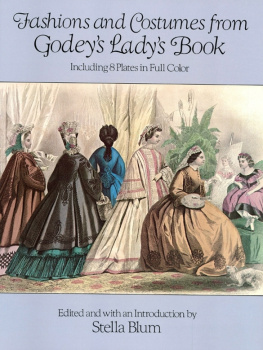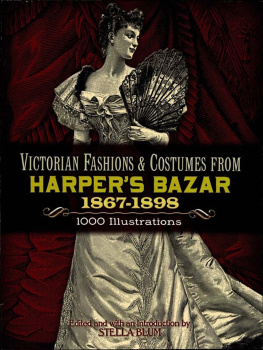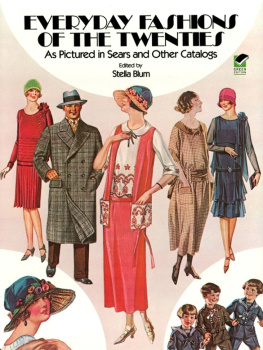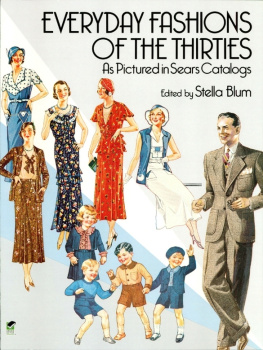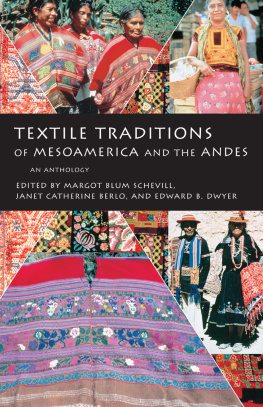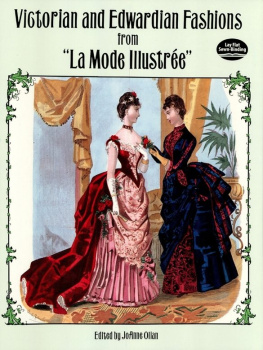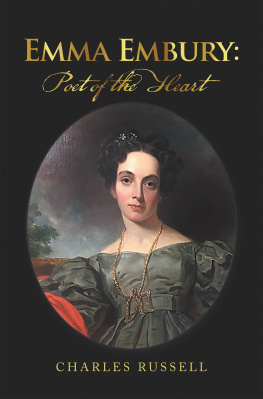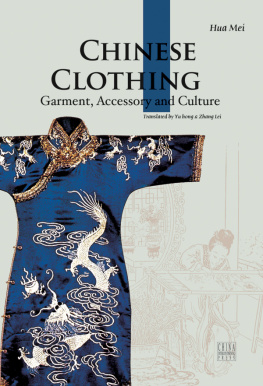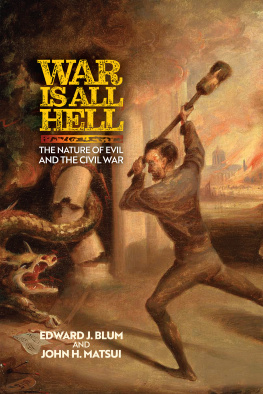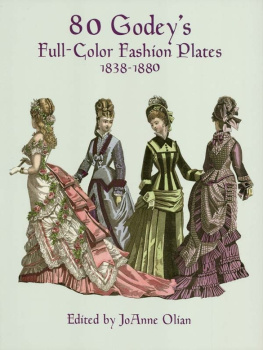Stella Blum - Fashions and Costumes from Godeys Ladys Book
Here you can read online Stella Blum - Fashions and Costumes from Godeys Ladys Book full text of the book (entire story) in english for free. Download pdf and epub, get meaning, cover and reviews about this ebook. year: 2012, publisher: Dover Publications, genre: Home and family. Description of the work, (preface) as well as reviews are available. Best literature library LitArk.com created for fans of good reading and offers a wide selection of genres:
Romance novel
Science fiction
Adventure
Detective
Science
History
Home and family
Prose
Art
Politics
Computer
Non-fiction
Religion
Business
Children
Humor
Choose a favorite category and find really read worthwhile books. Enjoy immersion in the world of imagination, feel the emotions of the characters or learn something new for yourself, make an fascinating discovery.
- Book:Fashions and Costumes from Godeys Ladys Book
- Author:
- Publisher:Dover Publications
- Genre:
- Year:2012
- Rating:3 / 5
- Favourites:Add to favourites
- Your mark:
- 60
- 1
- 2
- 3
- 4
- 5
Fashions and Costumes from Godeys Ladys Book: summary, description and annotation
We offer to read an annotation, description, summary or preface (depends on what the author of the book "Fashions and Costumes from Godeys Ladys Book" wrote himself). If you haven't found the necessary information about the book — write in the comments, we will try to find it.
Fashions and Costumes from Godeys Ladys Book — read online for free the complete book (whole text) full work
Below is the text of the book, divided by pages. System saving the place of the last page read, allows you to conveniently read the book "Fashions and Costumes from Godeys Ladys Book" online for free, without having to search again every time where you left off. Put a bookmark, and you can go to the page where you finished reading at any time.
Font size:
Interval:
Bookmark:
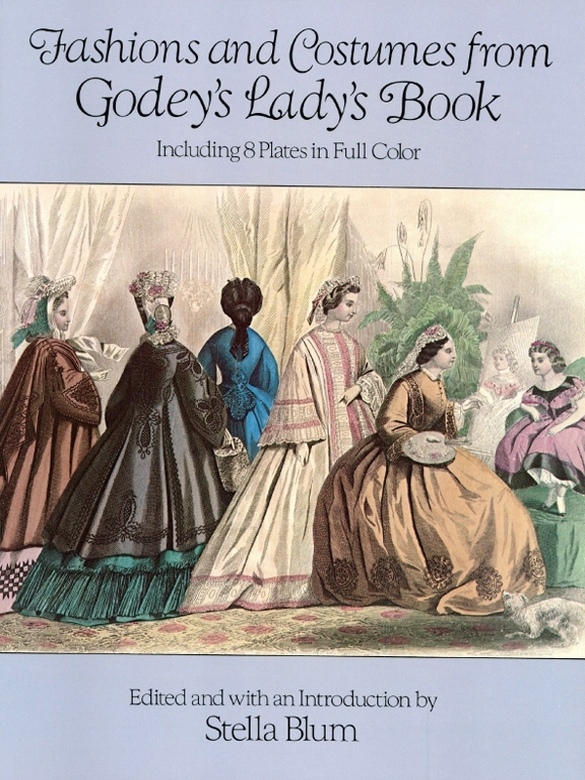
183769
With little competition and the support of loyal subscribers, Godeys Ladys Book enjoyed immense popularity shortly after its inception in 1830 and went on to become an institution and a leading fashion oracle until the late 1860s, when other periodicals began to make inroads into the Godeys readership. Although these publications were, in the main, clones of Godeys, they offered subscribers choice and variety.
When the magazine was first launched by Louis B. Godey in July 1830, it focused on short stories, serials and essays (pirated from English publications) which he assumed would be of interest to ladies. Sentimentally romantic, the contents had little depth or substance, or any specific reference to fashions. Godeys had published its first fashion plate in 1830, but it was without any description or commentary. For a few years following, fashion illustrations appeared sporadically. The initial plateswith little regard for copyright ethicswere reproductions of ones that had appeared earlier in French and English periodicals. In January 1837, Sarah Josepha Hale (17881879) took charge as editor and, in short order, the magazine began to reflect her input. Her creed was to make her work national... American... and a miscellany which although devoted to general literature is more expressly designed to mark the progress of female improvement.
By any standards in any period, Mrs. Hale was a remarkable woman. In her day, her achievements were nothing short of phenomenal. A nearly penniless widow with five young children and no particular training, she not only carved out a highly successful career as a magazine editor at a time when it was virtually impossible for women to support themselves, but even earned a place in history. An ardent feminist and a zealous activist in causes in which she believed, Mrs. Hale is credited with initiating the movement to make Thanksgiving a national holiday, helping to organize Vassar College, the first collegiate institution for women, and working for the completion of the Bunker Hill monument and for the preservation of Mount Vernon. Using her column, Editors Table, she championed womens causes and spoke out against a variety of social injustices. All this she somehow accomplished with the demeanor of a proper Victorian lady.
Shortly after she took over as editor, Mrs. Hale began to hire local artists to redraw for Godeys the fashions that appeared in foreign publications. As a result, a single illustration may be a composite of sources as well as of dates, some as much as a year apart. While these colored fashion plates served to inform the subscribers of the latest fashions, many of the gowns, particularly those for evening, were hardly appropriate for the lifestyle of most of Godeys readers, and one wonders if Mrs. Hale or anyone on her staff really ever came face to face with many of the fashions they featured in the colored plates. The captions were often vague as to the fabrics used in the dresses, and at times the colors as described in the text do not correspond with those in the hand-painted plates. In spite of these shortcomings and the impracticality of some of the high styles shown, these plates did supply the stuff of dreams for many an American woman.
Reading between the lines, one can detect that fashions were not high on Mrs. Hales priority list. She informs her readers that questions relating to fashion were not to be addressed to her; they were to be sent to someone called the Editress of the Fashion Department. However, she was an astute businesswoman and knew the importance of fashions to women. In due time, the magazine began to include more appropriate, simplified versions of European fashions expressed in clear black-and-white drawings. These were generally day clothes and could easily be read by dressmakers.
The closing years of the 1830s marked the end of the postclassical Romantic style. What ensued was a sentimental Gothic configuration. In 1837, Victoria became Queen of England. The crowning of a fragile girl in her teens as the head of a world power was a fantasy come to life. Women adulated her; they began to emulate her looks and followed her every movement with great interest. Aware of this fascination with the young queen, Godeys hired a correspondent, Mrs. Lydia H. Sigourney, who reported on the royal activities in London. However, brought up in a Protestant German tradition by a strict mother, Victoria shunned elaborate, opulent clothes. Following her example, fashions became nearly devoid of ornamentation. The accent was on plainness and modesty, reflecting the emphasis on female decorum. By 1840, skirt hemlines fell to the floor, totally concealing ankles and feet. Sleeves became so narrow that they restricted the movement of arms above the elbow. Rigidly boned, elongated bodices constrained the torso, giving the silhouette the static aspect of Gothic arches. Bonnets were designed to keep the wearers eyes chastely forward, precluding flirtatious sidelong glances. Relying mainly on the fabric and a minimum of trimming to give them distinction, the fashions of the 1840s appear rather stark and lacking in excitement.
In 1852, Napoleon III and Empress Eugnie revived the French court. The fashion-conscious empress soon put an end to Victorian austerity. Frederick Worth, an Englishman who founded French couture in 1858, provided Eugnie and her friends with fabulous gowns of magnificent silks made more luxurious by a multitude of laces, ribbons, fringes, feathers and artificial flowers. To accommodate the very full, wide skirts, which could no longer be supported by layers of petticoats, inventors looked back to the Spanish farthingale and produced a wired cage, hoopskirt or crinoline, which Godeys refers to as the bustle.
Until the late 1860s, few American women could afford French gowns. While Godeys included some copies of French fashion plates, many of the French gowns illustrated were simplified New York or Philadelphia versions. These are probably a more accurate record of the fashions worn in America during this period. By the mid-1860s, the hoopskirt went into eclipse and narrower skirts acquired a train. For a short time, to facilitate walking, an overskirt was looped up over an ankle-length underskirt and held in place by straps or bands. Although this style was short-lived, it created a new form which, by the late 1860s, evolved into a bustle that extended the back.
The period 183769 saw many sociological, political, cultural and technological changes, among which were the invention of the sewing machine and the graded pattern. Both of these eventually led to mass production. Although mail-order shopping through catalogues came later in the century, Godeys offered a shopping service. A reader could indicate what she wanted and, for a small fee, Godeys would try to meet the request.
During this period undergarments became an important part of a womans wardrobe. Until the 1830s, women wore only a simple shift under their gowns. This shift often served also as a nightdress. Plain at first, before the end of the century underwear became as elaborate as outerwear.
After the Civil War, the nature of American society began to change rapidly. Reconstruction, new technology and widening industrialization produced a growing American moneyed aristocracy and spreading urbanization. Fashion-minded ladies started to look for more sophistication in their magazines, closer to that featured in European publications. When compared to such competitors as Petersons and Grahams, Godeys began to look provincial and old-fashioned. Unfortunately, Mrs. Hale, who fought so hard for womens rights to education and a measure of equality with men, did not recognize that, in post-Civil War America, women had started to make some progress on the road to female improvement, and that their interests and range of activities had broadened accordingly.
Font size:
Interval:
Bookmark:
Similar books «Fashions and Costumes from Godeys Ladys Book»
Look at similar books to Fashions and Costumes from Godeys Ladys Book. We have selected literature similar in name and meaning in the hope of providing readers with more options to find new, interesting, not yet read works.
Discussion, reviews of the book Fashions and Costumes from Godeys Ladys Book and just readers' own opinions. Leave your comments, write what you think about the work, its meaning or the main characters. Specify what exactly you liked and what you didn't like, and why you think so.

